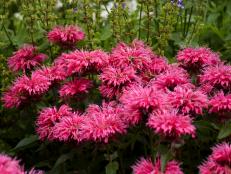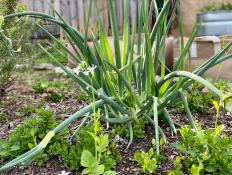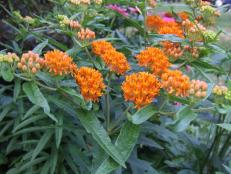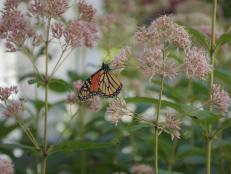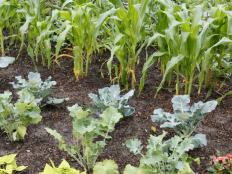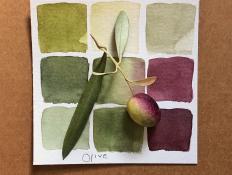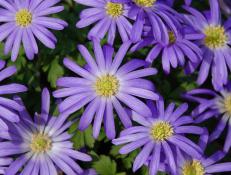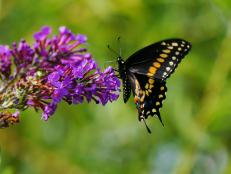Medicine Garden
In the old days, it was perfectly normal for Grandma to "doctor herself" with a little something from the garden. Herbal remedies are all the rage again these days, and like Grandma, you can turn to your garden for ingredients for natural remedies — from teas to soothing baths.
When you're planning a medicine garden, make sure to shop with reputable suppliers and buy seeds or starter plants that are labeled by both genus and species, not just with a common name. Any herb or natural concoction should be used in moderation and for a limited time; natural does not automatically mean mild, and overdose is possible. Here, we tell you what plants are commonly used to treat which ailments, but you'll need professional help to learn how to harvest and process the herbs; consult a well-respected herbalist. And of course, check with your doctor before you start taking anything you grow.
Here is a collection of easy-to-grow perennials that will keep you supplied with natural remedies for years to come.

Echinacea or purple coneflower (Echinacea purpurea). The almost daisylike, rosy-purple flowers of this native woodland and prairie perennial appear atop three-foot stems from mid-summer to early fall, but medicinally they're usually just for show. Instead, it's the creeping rootstock that is popularly used to treat colds and flu. It can be put into capsules or made into a tea. E. angustifolia is considered a more potent form. Sow seeds in fall in deep, well-worked soil in a mostly sunny location.

Lavender (Lavandula angustifolia). One of the staples of medicine chests for the last few thousand years, the fading flowers are used in a wide range of remedies for anxiety, headaches, insomnia, menopausal symptoms and wounds. They're also prized for their relaxing scent. Sow seeds in a sunny location (or use starter plants). Lavender prefers neutral to alkaline soil; sweeten your soil with a little lime if it's too acidic. The plant quickly becomes woody; prune in spring and again lightly after bloom.
St. John's wort (Hypericum perforatum). If the small, bright yellow summer flowers of this tufted perennial don't cheer you up, then its ingredients certainly will. The tiny "holes" in the leaves are actually colorless pockets of essential oils. Many species of St. John's wort exist, but only this one is widely used as an antidepressant. Foliage, flowers and stems go into making the infusion, and the flowers can also be used as an antiseptic topical treatment for minor scrapes and cuts. St. John's wort is an extremely adaptable plant for almost any pH or soil type, performing especially well in dry, rocky sites. Sow seeds or put in bare-root plants in fall, allowing two feet between plants.
Lemon balm (Melissa officinalis). The leaves are used in massage oils and as a balm for insect bites and also as an ingredient for a calming tea for colds, flu, nervousness and depression. Sow seeds in fall. Lemon balm is not picky as to soil and grows equally well in sun or partial shade. Once it gets going, this herb wants to take over, self-seeding with abandon and also creeping by woody rootstock. Yellow and creamy-white variegations are available.
Meadowsweet (Filipendula ulmaria). More than 150 years ago the flowers, leaves and stems of meadowsweet were discovered to hold salicylates, the mainstay of aspirin. But unlike aspirin, this rhizomatous perennial is also thought to soothe indigestion. A member of a family of stream-bank dwellers, meadowsweet needs moist soil in sunny locations. The creamy-white flower clusters appear on branching stems up to three feet tall in summer. Double flower and variegated forms are also available. Sow seeds in early spring or divide roots in spring or fall.
German chamomile (Matricaria recutita) or Roman chamomile (Chamaemelum nobile). Not just a soothing bedtime drink, steam inhalation of chamomile flowers is said to help soothe hay fever, a poultice can revive tired eyes, and, like lavender, chamomile is great in a hot bath. Although not a perennial, chamomile gives itself to self-seeding with abandon, and you'll find yourself with more volunteers than you'll know what to do with. Give it well-drained, slightly acid soil and full sun.
Photo of herb garden by Susan L. Hamilton






